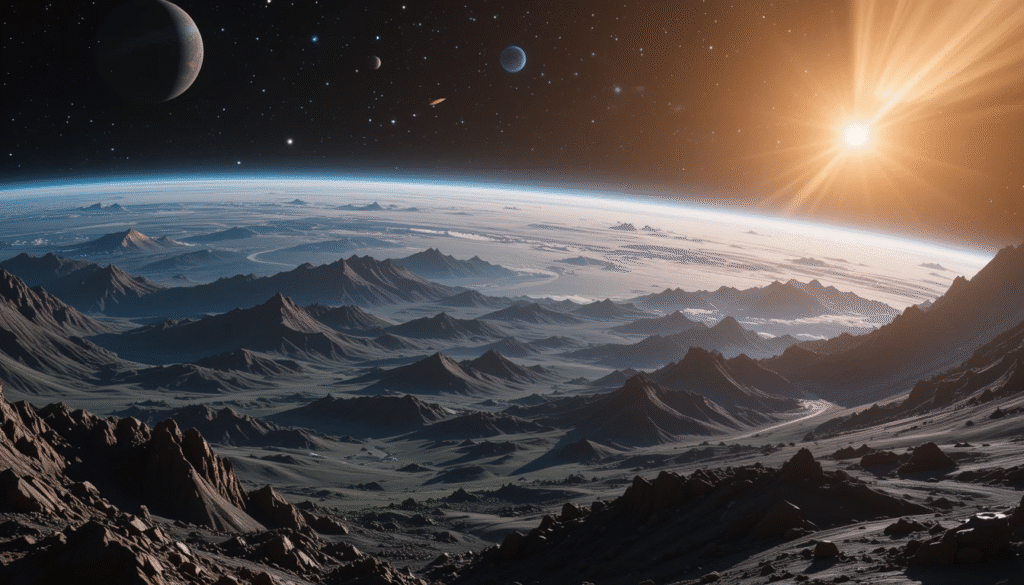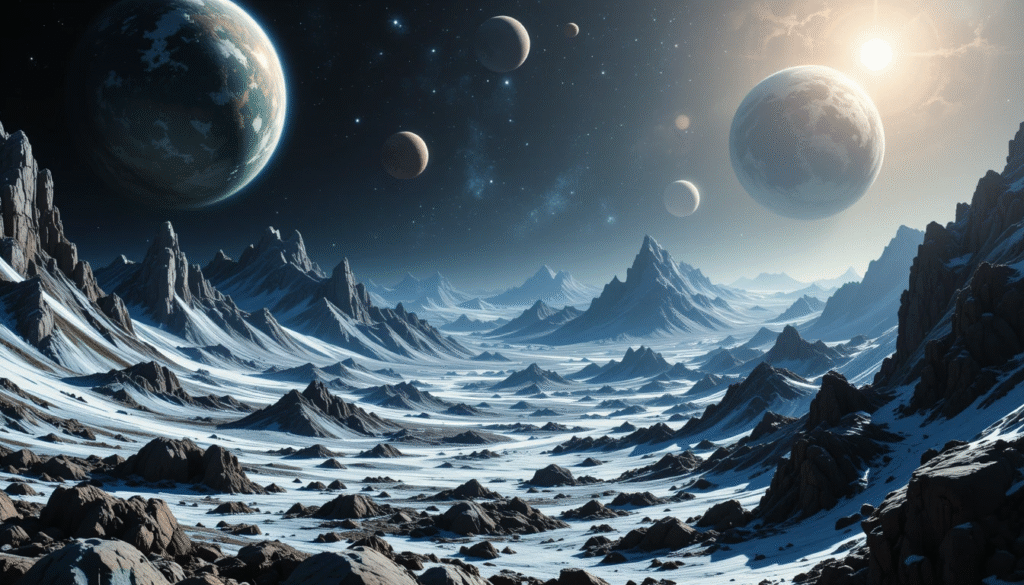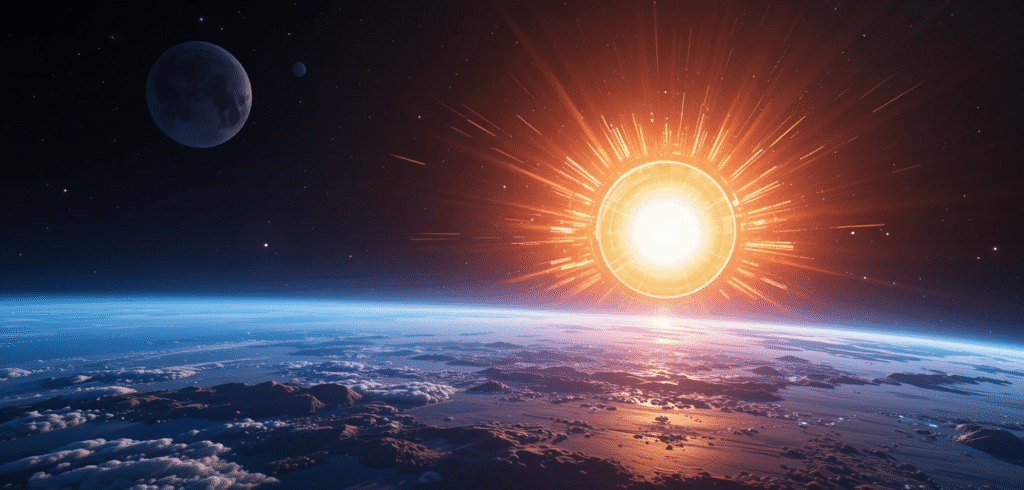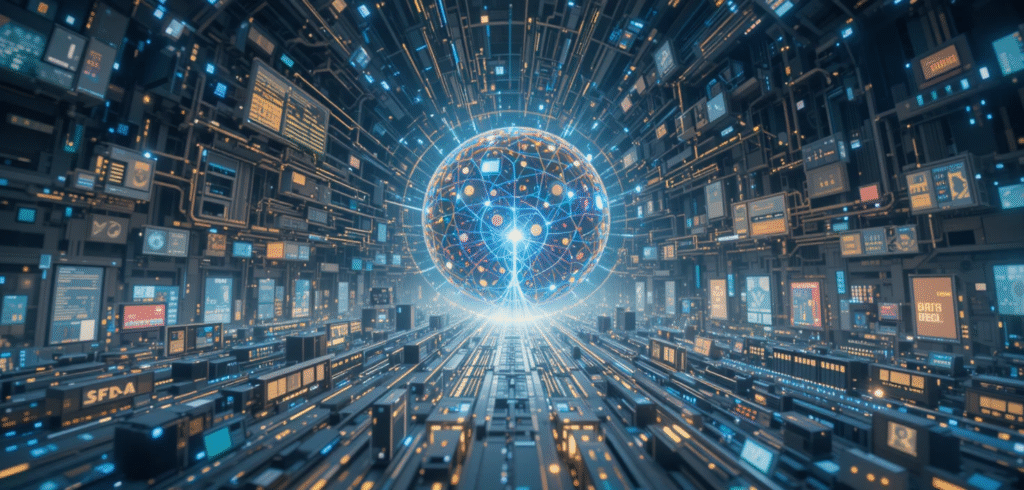One of humanity’s biggest aspirations has always been space travel, motivated by scientific advancement, curiosity, and the desire to expand our presence beyond Earth. Technological developments in recent years have made what formerly appeared to be science fiction possible. Today, governments, private businesses, and multinational partnerships are actively researching the idea of colonization other planets and celestial bodies. The goal of space exploration and technology for colonization is to create instruments, frameworks, and practices that enable people to live, adapt, and prosper in conditions outside of Earth’s atmosphere. The goal of creating long lasting human communities in space is gradually becoming a reality thanks to the quick advancements in robotics, artificial intelligence, propulsion systems, and life-support technology.

The Development of Space Travel
The introduction of satellites and manned flights marked the beginning of space exploration in the middle of the 20th century. The space era began in 1957 with the Soviet Unions Sputnik satellite, and in 1969 the United States Apollo missions landed the first humans on the moon. These accomplishments demonstrated that it was feasible for humans to exist outside of Earth. But colonization is a far more difficult task that need for sophisticated life support systems, resource management, and permanent infrastructure. From short term trips to the International Space Station (ISS), which acts as a testbed for long duration space living, exploration has changed throughout the decades. This development demonstrates that the groundwork for colonization technology and space exploration has already been established.
Why Space Colonization Is Required
The concept of space colonization is not only about curiosity or adventure; it is also about sustainability and survival. Overpopulation, pollution, resource shortages, and climate change are some of the problems facing Earth. In the event that Earth becomes inhospitable, colonizing other planets might serve as a fallback for mankind and guarantee our species’ existence. Furthermore, space colonization may make it possible to acquire abundant resources like water ice, rare minerals, and solar energy from planets, asteroids, and moons. Humanity is getting ready for a long term plan to safeguard its future by investing in space exploration and technology for colonization.

Important Technical Difficulties for Space Colonization
Systems of Propulsion
Advanced propulsion systems are needed to travel over great interplanetary distances. Long missions, such as colonizing Mars, cannot be accomplished with conventional chemical rockets. To shorten travel times and boost efficiency, newer technologies including solar sails, nuclear thermal propulsion, and ion propulsion are being researched. In order to reduce radiation exposure and preserve crew health for extended missions, faster travel is essential.
Systems of Life Support
Stable conditions with clean water, food, waste management, and breathing air are necessary for human colonization. Research is underway on closed loop life support systems to lessen reliance on Earth and recycle resources. For long term sustainability, NASA and other organizations are investigating aeroponics and hydroponics for growing food in space.
Radiation Defense
Astronauts are at significant risk for health problems from cosmic radiation and solar flares. Other planets and moons expose residents to higher quantities of radiation than Earth, which has a shielding magnetic field. Space Exploration and Technology for Colonization includes the development of shielding technology, protected shelters, and even subsurface colonies.
Building Habitats
One of the most difficult tasks is creating ecosystems that are both sustainable and safe. Transporting traditional building materials is costly and time consuming. As a result, scientists are investigating 3D printing with indigenous planetary materials like lunar dust or Martian regolith. Modular dwellings and inflatable buildings are also viable choices for establishing communities on the Moon or Mars.
Robots and Artificial Intelligence
AI and robotics will be essential to colonization. Robots can help with resource mining, habitat construction, and risky work in harsh locations. AI can assist with emergency decision-making, astronaut health monitoring, and spaceship system management.
Possible Targets for Colonization
The Moon
Since it is the nearest celestial body to Earth, colonization should start with the Moon. It provides chances to test life support systems, mine resources like helium 3, and establish research stations. Another use for lunar colonies would be as launching pads for further space travel.
Mars
Mars resemblance to Earth in terms of day length, seasonal cycles, and polar ice caps makes it the most suitable planet for settlement. Modern technology is necessary to make human settlements sustainable, nevertheless, because of its thin atmosphere, frigid temperatures, and radiation problems. Private businesses such as SpaceX are spearheading projects to build dwellings and spaceships for potential Mars colonists.
Asteroids
Minerals like iron, nickel, and platinum are abundant on asteroids. Mining bases or tiny outposts on or close to asteroids may be part of colonization initiatives. This might lessen reliance on Earth by supplying materials for building and fuel in space.
Beyond Mars
Due to their subterranean waters and special resources, Jupiter and Saturn’s moons, Titan and Europa, are being considered for future settlement. They are long term objectives, nevertheless, due to their great distance and hostile surroundings.
Social and Ethical Aspects
While the technological possibilities are exciting, space colonization raises ethical and social questions. Who will own and control extraterrestrial resources? How will laws and governance be established in space settlements? Will colonization create social inequalities between Earth dwellers and space settlers? Addressing these issues is as important as solving technical challenges. Ethical guidelines and international agreements will be essential to ensure that space colonization benefits all humanity.
Space Exploration and Colonization Future
Space exploration and technology for colonization appear to have a bright future thanks to private enterprises and global collaborations. While Blue Origin and SpaceX are developing plans for Mars settlement and reusable rockets, NASA’s Artemis program seeks to send people back to the Moon. Future colonization schemes also require active participation from China, Russia, and the European Space Agency. The possibility of permanent human settlements on the Moon and Mars over the next several decades might pave the path for mankind to evolve into a truly interplanetary species.
Final Thoughts
Space exploration and colonization technology is evolving into a scientific and technical endeavor with practical uses, no longer only a sci fi fantasy. Humanity is creating the means to live in space, from sophisticated propulsion systems to 3D printed dwellings and artificial intelligence (AI) powered robotics. In addition to ensuring human existence, colonization offers chances for resource use, technological advancement, and global collaboration. The quest to colonize space is humanity’s final step toward growth, resiliency, and discovery as we approach the dawn of a new age.



